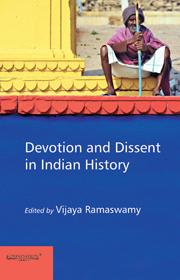Preface
Published online by Cambridge University Press: 05 October 2014
Summary
I am grateful to the many women I have interacted with in the course of three decades of my research on spirituality. Of them, it can be truly said that dissent from orthodox understandings of religion, and the shattering of liminalities in the spiritual domain, was the warp and weft of their very existence. Although my study focused on women, this would be equally true of spiritual masters like Ramakrishna Paramahamsa, Ramana Maharshi, Narayana Guru or the Sufi masters, Bulleh Shah or Lalon Fakir.
One of my early interactions was with Gomati Rajangam of Varanasi, an erudite Sanskrit and Hindi scholar and author of a commentary on the Kasi Khandam. Niece of the Tamil poet and nationalist leader Subramanya Bharatiyar, Gomati was married into an affluent family. The untimely demise of her husband brought home to the young woman all the travails and cruelties of widowhood. She told me that she travelled ticketless to Kasi, believing that it was better to die in Kasi than live the ignoble life imposed on her by the male relatives who robbed her of all the property. She lived on for the next 75 years in her chosen place on the Kedarghat of the Ganga and her everyday life was a celebration of the presence of god.
In the case of Gomati Rajangam and many like her, both men and women, dissent was not an oppositional category to be juxtaposed against norms but the very definition of true spirituality. In the three decades I have spent encountering and interacting with such figures, either in the Himalayas, on the river banks of Rishikesh and Varanasi or in the hermitage of Ramanashramam in Tiruvannamalai, this truth has been borne upon me and my heart goes out to these ‘devout dissenters’ with overflowing gratitude.
- Type
- Chapter
- Information
- Devotion and Dissent in Indian History , pp. xvii - xviiiPublisher: Foundation BooksPrint publication year: 2014

